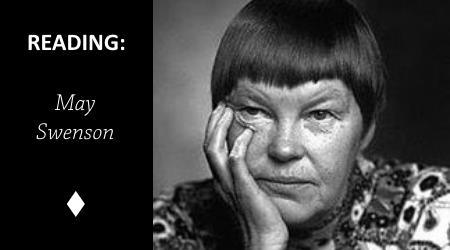Anna Thilda May, “May” Swenson (1913-1989) was an American poet and playright, and a very important one with a prolific career. A critic notes that in her poetry, “the sheer thingness of things is joyfully celebrated.” She is particularly celebrated for her nature poetry. I read a haunting verse about birds:
The Woods At Night
The binocular owl,
fastened to a limb
like a lantern
all night long,sees where all
the other birds sleep:
towhee under leaves,
titmouse deepin a twighouse,
sapsucker gripped
to a knothole lip,
redwing in the reeds,swallow in the willow,
flicker in the oak –
but cannot see poor
whippoorwillunder the hill
in deadbrush nest,
who’s awake, too –
with stricken eyeflayed by the moon
her brindled breast
repeats, repeats, repeats its plea
for cruelty.
I think of an Eagle Owl, a larger species who also eats smaller birds. This is why he knows where they all sleep. In the poem, this is described with beautiful musical language that is there to enjoy. A towhee and a titmouse in a twighouse, the sapsucker gripped to a knothole lip, the redwing in the reeds. Swallow – willow, and then the whippoorwill under the hill. The sound is like the concert of the birds.
Now what about the enigmatic finale of this poem, the three times repeated plea for cruelty? Does the whippoorwill want to be eaten by that owl? Is the subjectivity of its plea to be caught and eaten the subjectivity of nature, the subjectivity of the truth of predator and prey, the prayer of the prey? At least, that is my reading. I’d be happy if some of you find a more plausible alternative!
